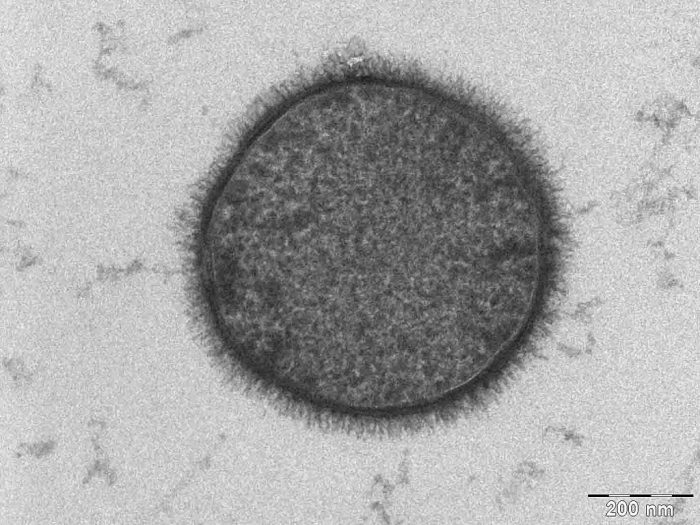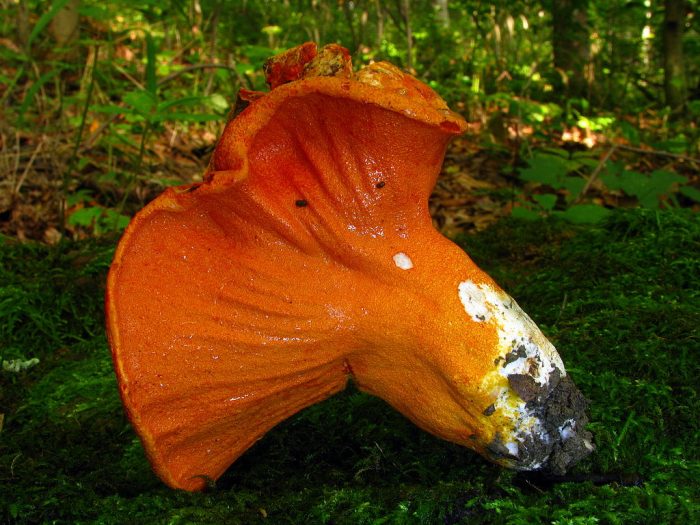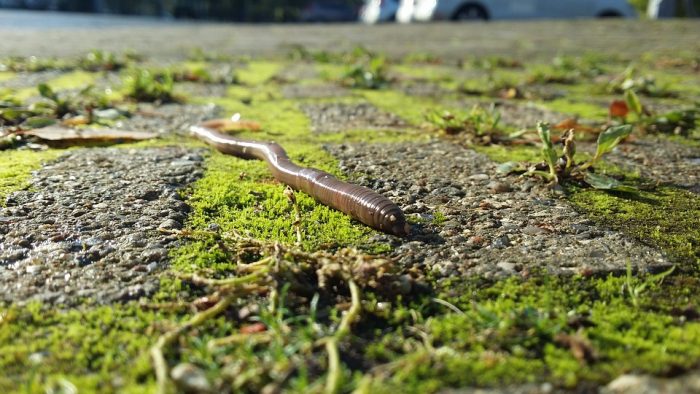
Decomposers are organisms that degrade, decay, or breakdown dead organisms, carrying out the process of decomposition. Decomposers are heterotrophic organisms, meaning that they derive their energy from organic substances, in contrast to autotrophic organisms which can generate energy from inorganic sources like sunlight.
The term decomposers and detritivores are frequently used interchangeably, but there is actually a difference between these two terms. Technically, detritivores are organisms that have to ingest/consume dead matter to process it, while decomposers may be able to absorb the nutrients and break down the organic material without ingesting it. Detritivores are a subset of decomposers. Examples of decomposers include organisms like bacteria, mushrooms, mold, (and if you include detritivores) worms, and springtails.
“Wood’s not natural mulch for a woodland garden. Do you see forest trees shatter into a zillion pieces and fall? No. They fall, then decompose, then spread.” — Janet Macunovich
Examples Of Decomposers
Various species of bacteria play an important role in the breakdown of organic material. This is especially true during the early stages of decomposition. Bacteria are more effective at breaking down material when moisture levels are high. Examples of decomposer bacteria include Bacillus subtilis and Pseudomonas fluorescens.

Photo: By Allonweiner at English Wikipedia – Transferred from en.wikipedia to Commons by alnokta., Public Domain, https://commons.wikimedia.org/w/index.php?curid=4487608
Bacillus subtilis also referred to as grass bacillus or hay bacillus, is found in soil all over the world as well as in the gastrointestinal tract of ruminant animals. The species is typically found within the upper layer of soil. It has the ability to tolerate extreme environmental conditions, and humans use it for a wide variety of different food production systems. For instance, the bacteria is used in the production of the Japanese food natto, as well as a soil inoculant for agricultural and horticultural operations. Meanwhile, Pseudomonas fluorescens is a type of bacteria found within bodies of water and in the soil. While the bacteria can break down dead organic substances, it can also compromise the immune systems of people, creating rare disease conditions. The bacteria can also be used to treat various disorders of the eye, ear, and skin when properly produced and controlled. It is frequently used in the production of various medical sprays, ointments, and creams.
Bacterial decomposers are the type of decomposer most commonly found within bodies of fresh water, though certain types of clams and freshwater shrimp can also act as aquatic decomposers.
Fungi are the other primary decomposer, in addition to bacteria. Fungi is a kingdom of life and it can be subdivided into fungus and mold. A fungus is a substance made out of millions of different spores or particles, connected together. A fungus can manifest itself in different ways, such as mushrooms – which are the fruiting or spore-bearing body that is typically found above ground on the source of the food. Mushrooms are the fruits produced by mycelia, and most mushrooms are indicators that the soil in the region is healthy. Mushrooms can be used to facilitate the breakdown of material, such as when creating compost beds. Mushrooms can be added to a compost pile to start fungal growth.
Another type of fungus is mold, which is made out of particles somewhere between 2 to 10 microns in diameter, making these individual particles invisible to the naked eye. Only when the mold particles are joined together does it become visible, spreading out over a surface. Although fungus spores look like plants, they cannot produce energy through photosynthesis.
“Fungi are the grand recyclers of the planet and the vanguard species in habitat restoration.” — Paul Stamets
Spores attach themselves to surfaces and once there they draw nutrients from the organic material found there. Spores are joined together by a network of branches referred to as hyphae, and networks of hyphae are called mycelium. Large networks of mycelium can be found under dead leaves, straw, and grass, and they can run for miles underneath the soil. These networks of fungus break down dead organic matter and return the nutrients that composed them to the soil.

Photo: By This image was created by user Dan Molter (shroomydan) at Mushroom Observer, a source for mycological images.You can contact this user here. – This image is Image Number 169126 at Mushroom Observer, a source for mycological images., CC BY-SA 3.0, https://commons.wikimedia.org/w/index.php?curid=22775511
Though fungus is a decomposer that breaks down organic material, many types of fungus also have symbiotic relationships with plant life. In fact, some 85% to 90% of plant life benefit from a symbiotic relationship with a fungus known as mycorrhiza. Mycorrhizae lives on the roots of plants and trees, and they feed on the organic matter produced by these plants. When this matter is broken down the fungus receives the carbon from the decomposed matter, and the plant roots get the nutrients freed by being broken down by the fungus.
Beyond breaking down organic material into nutrients, mushrooms can help us develop treatments for diseases. Mycologists and biologists often study the effects of mold and mushrooms to discover how the components can be used to fight bacterial infections or other forms of fungus. For instance, the antibiotics penicillin, ampicillin, and amoxicillin were all created from fungi samples. Fungi can also be utilized to break down toxins which can cause ecological damage. Mushrooms have been used to facilitate the clean-up of oil spill sites since they can break down petroleum and oil. Mushrooms can even eliminate toxic gases and dioxins. Fungi can also be used to create food for humans to consume. Yogurt is made with active yeast (fungi) cultures and in addition to giving us nutrients yogurt often serves as a probiotic.
Of course, fungi can also be harmful. Mould and fungi can be toxic to people, causing symptoms that range from mild gastrointestinal discomfort, diarrhea, and vomiting to liver failure or death. Fungal infestations can also prove problematic for industrial or agricultural operations, fungal infestations cause an estimated 20 million dollars in damage to farmers across the US every year. Mildew and fungal blights cause damage to produce.
Detritivores
As previously mentioned, the difference between detritivores and decomposers is that while decomposers can extract nutrients from organic materials through being in contact with the material, detritivores must consume that material to get nutrients. Now that we’ve examined decomposers and gone over the difference between decomposers and detritivores, let’s look at some examples of detritivores as well.
Detritivores get their name from the fact that they feed on detritus, the organic matter made out of decaying plants and animals. Most detritivores are small insects like flies, termites, mites, butterflies, and beetles. Earthworms, millipedes, snails, slugs, and mollusks are also common detritivores. Detritivores found in aquatic environments include lobsters, crabs, sea numbers, and sea stars. Many of these aquatic detritivores occupy a similar niche to their land-dwelling counterparts, living on the seabed, and these organisms are sometimes referred to as bottom feeders.

Photo: catarina132 via Pixabay, CC0
Detritus is made out of the particulate organic matter or POM which is formed by the deposition of tissues left behind by dead animals and plants. Colonies of microorganisms frequently take up residence within these piles of detritus and provide additional nutritional value to the detritivores. The energy contained by the microorganisms and detritus is obtained by detritivores through consumption. Detritivores typically feed on the larger particulate matter that is freed during the beginning phases of the composition, and this action helps break apart the larger particulate pieces into even smaller pieces. As the detritivores break down the larger particles they increase the surface area that smaller decomposers can latch onto, accelerating the breakdown of the material.
The process of digestion that detritivores undergo also breaks down certain lipids, proteins, and carbohydrates within the detritus. This allows water-soluble nutrients to join with the soil and increase the soil’s overall mineral content. While this happens the detritivores are in the process of absorbing the nutrition and adding it to their own bodies, increasing their biomass. They also add this biomass to the food web when they are consumed by other organisms.
“Earthworms are the intestines of the soil.” — Aristotle
Two notable examples of detritivores are worms and springtails. Worms happen to be one of the most important detritivores. They are found within the soil and they feed on organic matter present throughout multiple layers of the soil. There are endogenic and epigeic worms. The endogeic worms live in the upper layers of soil while the epigeic worms are found on the surface of the soil. Both of these different types of worms feed on by organic material such as algae, fungi, and other microorganisms found on these materials. They also subsist on fallen leaves and dead grass. Anecic worms are those that are found deep within the soil and they typically consume raw soil, though this soil has large amounts of fungi, algae, and bacteria within it. The worms take in the soil through their mouth and pass out a cast after doing this, which is a processed version of the soil that is ripe for decomposition by microorganisms.
Springtails are a form of arthropod that typically lives within leaf litter and subsist on decaying grass, wood, and moss. Most springtails feed on vegetation, lichen, algae, pollen and fungal mycelium. Springtails are very adaptable organisms that can live in a variety of different environments and subsist on a wide range of materials. They are one of the most numerous macroscopic lifeforms, and a square meter of soil can contain around 100,000 springtails.









